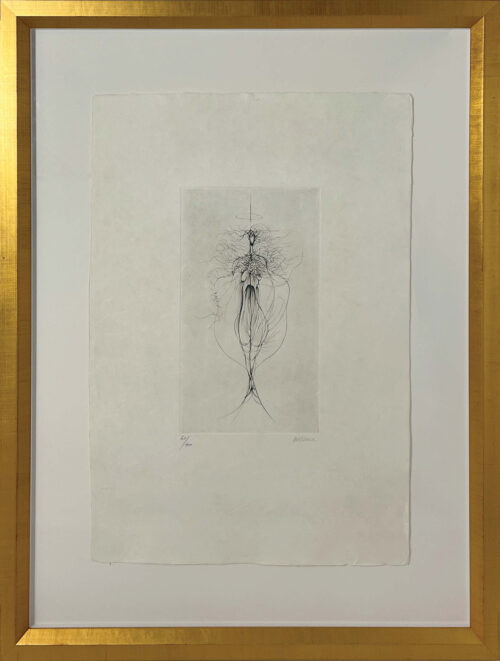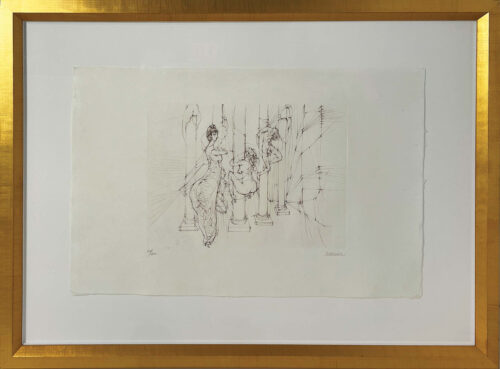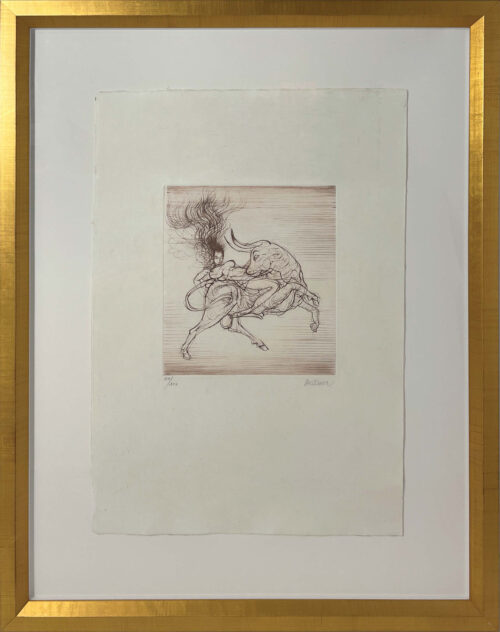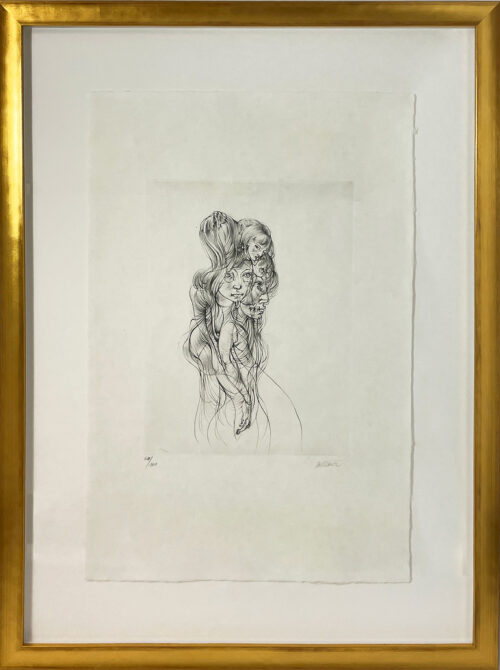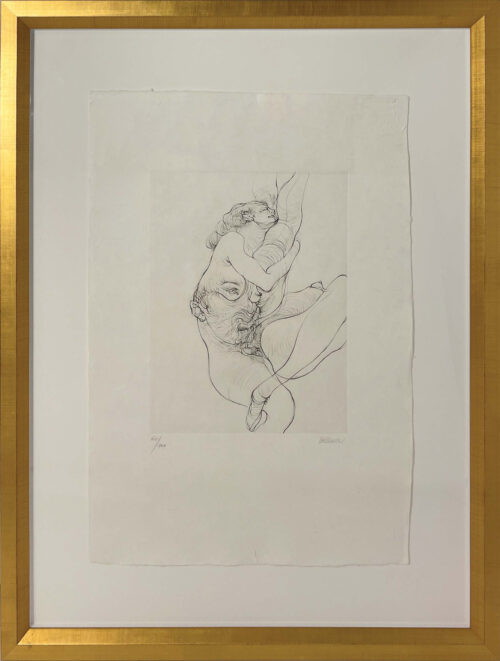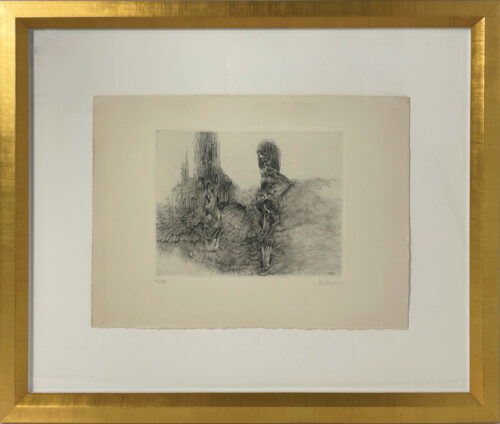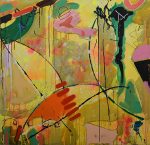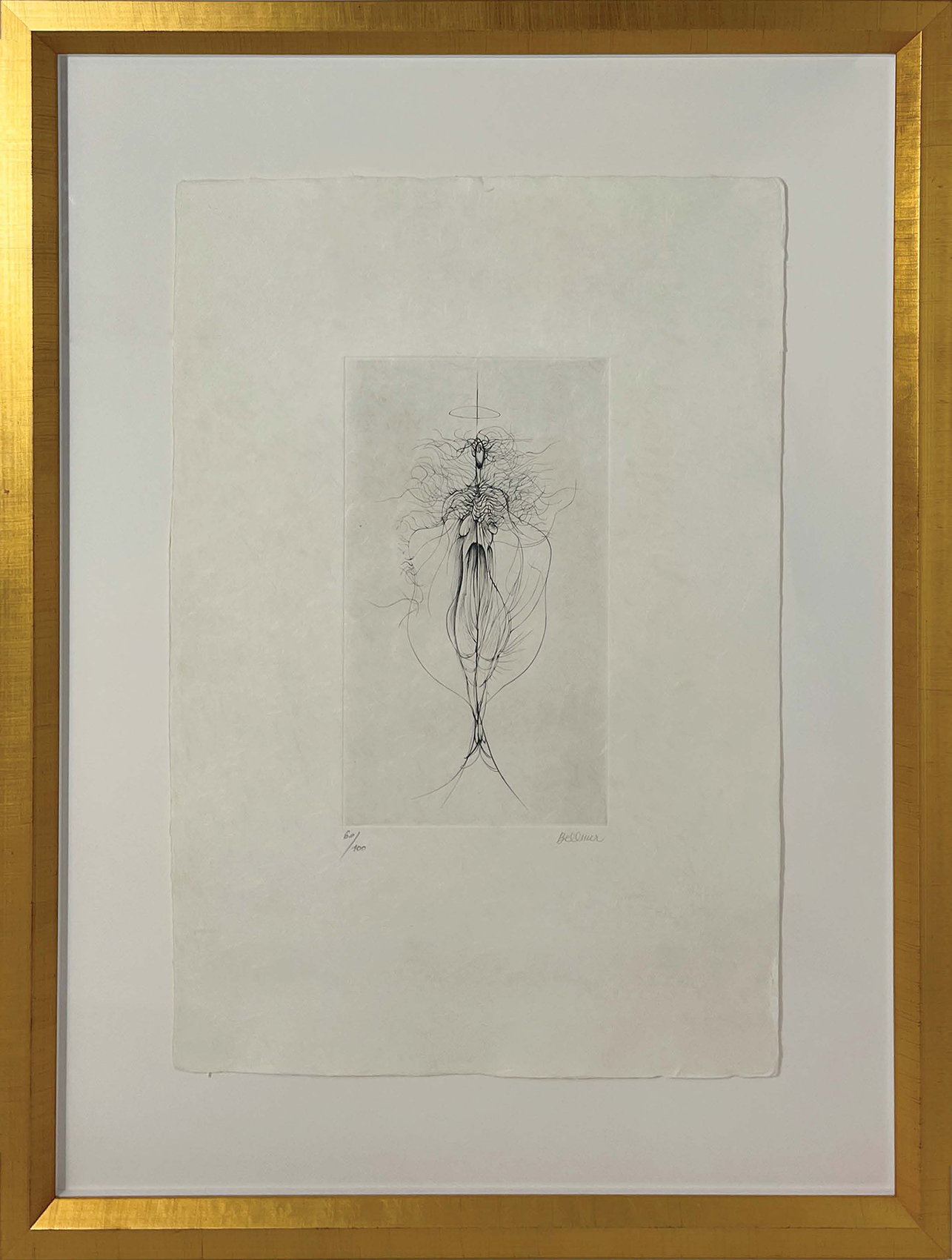
Hans Bellmer is a French artist of German origin, born in 1902 in Germany. Raised by and cold and strict father, Bellmer’s childhood held little joy. In 1923, he took classes at the Technische Hochschule in Berlin and met the initiators of Dadaism.
Hans Bellmer’s art, often in the form of dolls he called language images, served as a form of personal therapy, in which he objectified abusive relationships, explored his fantasies, and projected the essence of his desire for women and objects. He lived through the repression of artists in Nazi Germany, which became another trauma informing his art. After the war, he became well known for his explicit and sometimes pornographic illustrations. He created images that reflected what he felt was a disturbing, and disturbed world. His work has been hailed by some as representing the limits of human sexuality, while others have found his work to simply objectify the female body as a captive of the male sexual gaze. In 1943, Hans Bellmer organized his first solo exhibition.
His work is violent and subversive: doll sculptures made up of bodies of nude models, photographs, engravings that fascinated the surrealists. Refined and daring, his etchings transcribe the secret impulses and ambivalences of the erotic body. In 2006, the Center Pompidou devoted a retrospective, centered on the anatomy of desire, a concept at the heart of the singular creation of the French artist.
Bellmer remains one of the most influential and notorious artists of the 20th century. As his creations, and his possible intentions behind them have been reinterpreted and debated, his reputation and impact have grown. The feminist movement took a dim view of his objectification of women, as Rudolf Uenzli points out in Surrealism and Misogyny, “these are not just “bodies;” these are always female figures. Bellmer died in Paris in 1975.


